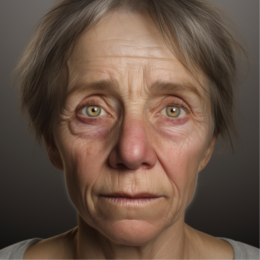Understanding Atherosclerotic Cardiovascular Disease

In medical and public health discussions, the question often arises: what is atherosclerotic cardiovascular disease?
Facts and Statistics:
According to the Centers for Disease Control and Prevention (CDC), heart disease is the leading cause of death in the United States, accounting for one in every four deaths.
Understanding Cardiovascular Health
The Importance of the Cardiovascular System
The cardiovascular system is more than just a network of veins, arteries, and a pumping heart. It’s the circulatory cornerstone of the human body, transporting essential nutrients, oxygen, and hormones to cells while removing waste products like carbon dioxide and metabolic byproducts. Any dysfunction in this system can severely impact your overall health and quality of life.
Critical Components of Cardiovascular Health
Three primary components determine your cardiovascular status: the health of your heart, the integrity of your blood vessels, and the quality of your blood. Monitoring these factors through regular medical check-ups can provide a comprehensive view of your cardiovascular health, helping you take proactive steps to maintain it.
Facts and Statistics:
The American Heart Association reports that nearly half of all U.S. adults have some form of cardiovascular disease.
Atherosclerosis: The Silent Threat
Definition and Explanation of Atherosclerosis
A common question in cardiovascular health is: what is atherosclerotic plaque? This term refers to a sticky substance composed of cholesterol, fatty substances, and other elements that accumulate inside the arteries. This buildup narrows and hardens these vital blood vessels, restricting blood flow and increasing the risk of cardiovascular events such as heart attacks and strokes.
Risk Factors for Atherosclerosis
Several risk factors contribute to the development of atherosclerotic plaque. These include high levels of low-density lipoprotein (LDL) cholesterol, high blood pressure, smoking, and diabetes. Lifestyle choices such as diet, exercise, and stress management also play a crucial role in managing these risk factors.
Facts and Statistics:
According to the CDC, 34.5% of U.S. adults have high LDL cholesterol levels, a significant risk factor for atherosclerosis.
The Development of Atherosclerotic Cardiovascular Disease
Stages of Atherosclerosis Progression
Atherosclerosis often starts with the accumulation of fatty streaks along arterial walls. Over time, these evolve into more complex forms. This progression leads to a condition known as atherosclerotic calcification. But what is atherosclerotic calcification? It’s a process where calcium deposits form on the plaque, causing the arterial walls to harden and further narrow, increasing the risk of blockages.
Complications and Consequences of ASCVD
The complications arising from atherosclerotic cardiovascular disease are numerous and severe. They range from coronary artery disease and angina to life-threatening conditions like heart attacks and strokes. These complications can severely impact your quality of life and require extensive medical intervention.
Facts and Statistics:
The National Institutes of Health (NIH) estimates that 65% of men and 70% of women aged 60 or older have medium-to-high-risk plaque in their arteries.
We’d love to hear from you! Take a moment to answer this quick poll:
Quick Poll

Diagnosis and Risk Assessment
Importance of Early Detection
Early detection is crucial for effective management and can be life-saving. The sooner conditions like atherosclerotic plaque and calcification are identified, the better the chances of managing them effectively through lifestyle changes and medication.
Diagnostic Tests for ASCVD
Various diagnostic tests are available, ranging from lipid profile tests to advanced imaging techniques like coronary angiography. These tests can help identify the presence of atherosclerotic plaque and assess the risk of future cardiovascular events.
Risk Assessment Tools
Several risk assessment tools, such as the Framingham Risk Score and the ASCVD Risk Calculator, are commonly used to evaluate your likelihood of developing atherosclerotic cardiovascular disease. These tools consider factors like age, cholesterol levels, and blood pressure, providing a comprehensive risk assessment.
Facts and Statistics:
According to the American Heart Association, only about 54% of women recognize heart disease as their number one killer, highlighting the need for better diagnostic awareness.
Prevention and Management
Lifestyle Modifications
Simple lifestyle changes like adopting a balanced diet rich in fruits, vegetables, and lean proteins, engaging in regular physical activity, and avoiding smoking can significantly reduce the risk of developing ASCVD.
Medications for Managing ASCVD Risk
Various medications, including statins and ACE inhibitors, can help manage the risk of developing atherosclerotic cardiovascular disease. These medications are often prescribed alongside lifestyle modifications for maximum effectiveness.
Facts and Statistics:
The WHO states that tobacco use, an unhealthy diet, and physical inactivity increase the risk of heart attacks and strokes.
Living with Atherosclerotic Cardiovascular Disease
Living with ASCVD requires a multi-faceted approach that includes medication, lifestyle changes, and regular medical check-ups. While the diagnosis can be daunting, effective management can lead to a fulfilling life.
Facts and Statistics:
According to the American Heart Association, an estimated 85.6 million Americans are living with some form of cardiovascular disease or the after-effects of stroke.
Conclusion and Call to Action
Understanding what is atherosclerotic cardiovascular disease is the first step in combating this silent killer. Knowledge is power, and the more we know, the better we can manage this condition.
PLEASE SHARE YOUR EXPERIENCE AND THE COMMENTS BELOW SO WE CAN HELP EACH OTHER WITH THE KNOWLEDGE YOU HAVE GAINED.
References
- Centers for Disease Control and Prevention (CDC). “Heart Disease Facts.” URL: https://edubirdie.com/blog/heart-disease-facts
- World Health Organization (WHO). “Cardiovascular Diseases (CVDs).” URL: https://www.who.int/news-room/fact-sheets/detail/cardiovascular-diseases-(cvds)
- American Heart Association. “Heart Disease and Stroke Statistics—2020 Update.” URL: https://www.ahajournals.org/doi/10.1161/CIR.0000000000000757
- American Heart Association. “High Prevalence of Coronary Atherosclerosis in Asymptomatic Teenagers and Young Adults. URL: https://www.ahajournals.org/doi/10.1161/01.CIR.103.22.2705
- National Institutes of Health (NIH). “Atherosclerosis Risk in Communities Study.” URL: https://www.nhlbi.nih.gov/science/atherosclerosis-risk-communities-aric-study
- European Heart Journal. “Early Detection of Cardiovascular Disease.” URL: https://academic.oup.com/eurheartj
- Wikipedia. “Framingham Risk Score.” URL: https://en.wikipedia.org/wiki/Framingham_Risk_Score
- Centers for Disease Control and Prevention (CDC). “Cholesterol Treatment Guidelines.” URL: https://www.cdc.gov/cholesterol/treatment.htm
- American Heart Association. “Economic Cost of Cardiovascular Diseases.” URL: https://www.ahajournals.org/doi/10.1161/CIR.0000000000000558





